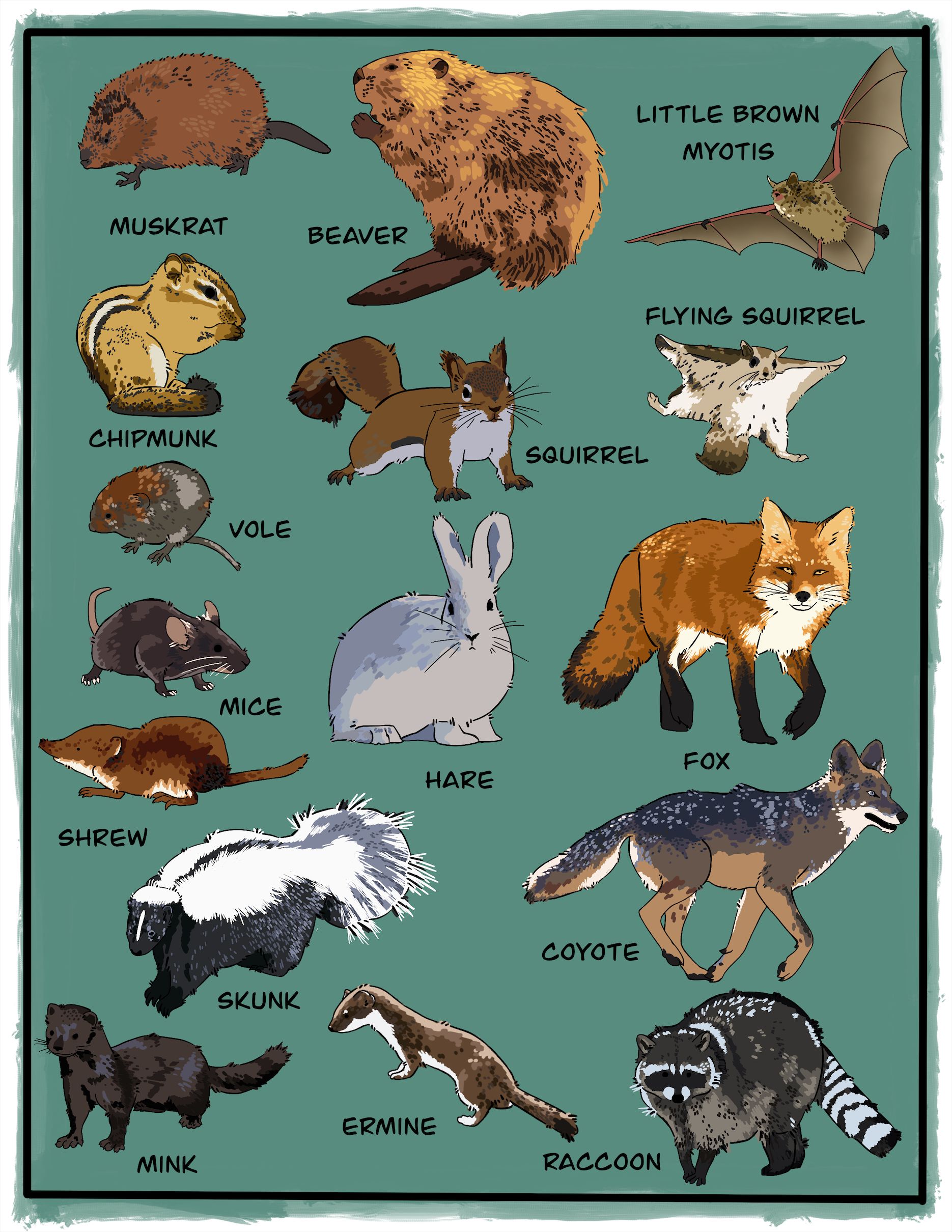Mammals
"The more intimate we become with other lives, the more aware we are of how those lives connect with and affect our own".
- Paul Rezendes Tracking and the Art of Seeing
Mammals are furry, warm-blooded vertebrates, who have live births and produce milk. Examples are humans, Snowshoe hares, foxes, mice, seals, and bats!
Exploring, observing, and getting to know mammals is a sensory-rich way to learn about our surroundings. It is easy to foster empathy and joy through learning about mammals because we are mammals! Themes we see in the mammal world, like family bonds, the need for community, and dens, or homes are all things we all care about too.
Caretakers of their environments
Mammals co-exist with nature; performing so many ecological services. The red squirrel, for example, stores food such as acorns and other seeds just below the surface of the soil for the winter months when food supplies are more scarce. This stored food supply is called catches.
Through no accident, they are buried at the exact time and place suitable for germination. In the spring Oak seedlings will emerge in the forest from forgotten catches, ensuring that generations to come will be able to benefit from its acorns.
